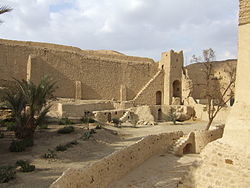도브 베흐르 마니스체비츠
Dov Behr ManischewitzDov 베어 마니 슈비츠(1856년 또는 1857[1]또는 1858[2]Salant에 – 3월 8일 1914년, 오하이오 주 신시내티에서)[2]또한 Dov Ber,[3]Dov Baer,[4][5]Dov Bear,[6][7]데이브 Behr,[2]와 데이빗 Behr,[8]고 Dov 베어 Abramson,[9][10]는Lithuanian-American 랍비이자 사업가, matzah의 제조 그는 혁신적인, 그리고 그의는 프리젠테이션으로 알려져 태어난 알려져 있다.이온 회사 측은 그의 이름을 새긴.
초년기
마니스체비츠는 살란트에서 태어나 자랐으며,[11] 메멜의 랍비 이스라엘 살란터 밑에서 공부했는데,[12] 그곳에서 쇼체트로 훈련했다.[2]1885년, 그는 "마니스체비츠"라는 이름의 죽은 사람의 신원확인 서류를 [2][13]이용하여 미국으로 이민을 갔다.[13][9][10][14]신시내티 유대인 공동체에 sh으로 고용되어 이민을 갔다고 진술했지만, 당시 미멜에서 유대인을 곧 추방한 것에 대한 대응이거나,[3] 강제 병역을 피하기 위한 것이었다는 등의 다른 이유가 제시되어 왔다.[2][10][9]
직업생활
신시내티에서 마니스체위츠는 처음에는 쇼켓과 행상인으로 일했다;[9] 마자(Matzah)를 구할 수 없었기 때문에, 원래는 그의 지인들을 위해 그의 지하실에서 자신의 것을 만들었지만, 나중에는 도시 전역의 유대인들을 위해서였다.[9]결국 그의 상품은 충분히 성공적이어서 대량생산을 하게 되었고, 그가 특허를 낸 가스난로와[15] 컨베이어 벨트 기반의 "트래블 캐리어 베이크오븐"을 [13]포함한 새로운 기계화된 방법으로 옮겨갔다.[16]이러한 방법들은 당초와 질문 여부 기계로 만든 음식 식사 계율을 준수하기가 제기되었다;[3][12] 하지만, 마니 슈비츠는 그의 손을 들어주(역사가인 잘만 테크 앨퍼트는 마니 슈비츠와 미국의 라비의 당국은 Lithuan의 유명하기로 결정하였다 미국의 라비의 당국과 함께 자신의 입장을 주장했다 많은 논란을 불러일으켰다.제 ian전통을 염원하다.[17]
그의 마차 사업은 1913년 호두 힐즈의 고급 신시내티 인근으로 이사할 수 있을 정도로 충분히 성공적이었다.[18]또한, 그는 당시 팔레스타인이었던 곳에 마니스체비츠 예시바 창조를 후원했다; 수십 년 후, 그의 아들들은 법정에서 예시바에 대한 그들의 지속적인 자금 지원은 사업비라고 주장했다. 왜냐하면 그 졸업생들이 기계로 만든 마차들이 여전히 더 정숙할 수 있다는 생각을 퍼뜨리는데 도움이 될 것이기 때문이다.[5]
마니스체비츠는 1914년에 사망했으며, 코베데일의 베스 하메드라시 하고돌 공동묘지에 안장되어 있다.[19]
참조
- ^ Manischewitz Alpern, Laura (2008). Manischewitz: The Matzo Family : the Making of an American Jewish Icon. KTAV Publishing House. p. 137. ISBN 9781602800038.
...He died in March 1914, at age fifty-seven
- ^ a b c d e f "The Late Rabbi Dave Behr Manischewitz". Prominent Jews of America; a collection of biographical sketches of Jews who have distinguished themselves in commercial, professional and religious endeavor. American Hebrew Publishing Company. 1918. p. 191.
- ^ a b c Sarna, Jonathan D. (2005). "How Matzah Became Square: Manischewitz and the Development of Machine-Made Matzah in the United States" (PDF). Sixth Annual Lecture of the Victor J. Selmanowitz Chair of Jewish History, Touro College; archived at Brandeis University. Retrieved May 11, 2019.
- ^ Marcus, Jacob Rader (1993). "Baer Manischewitz, of Cincinnati, known for his matzos". United States Jewry, 1776–1985: Volume 4, The East European Period, The Emergence of the American Jew Epilogue. Wayne State University Press. ISBN 9780814345054.
- ^ a b "B. MANISCHEWITZ CO. v. COMMISSIONER – Docket No. 13236 – 10 T.C. 1139". Leagle.com. 1948.
- ^ George, Lianne (December 8, 2008). "Why Food Scares Just Aren't Kosher". Maclean's. Retrieved May 11, 2019.
- ^ "MANISCHEWITZ, E. JUDY". The New York Times. December 8, 2008. Retrieved May 11, 2019.
- ^ Jacob Rader Marcus and Judith M. Daniels, ed. (1994). "The Concise Dictionary of American Jewish Biography: M" (PDF). Brooklyn, NY: Carlson Publishing.
- ^ a b c d e Marks, Gil (April 18, 2011). "How Manischewitz Matzo Helped Make America". The Forward. Retrieved May 11, 2019.
- ^ a b c "Man, oh man: How Manischewitz created a matzah empire". J. The Jewish News of Northern California. March 26, 2010. Retrieved May 11, 2019.
- ^ Manischewitz Alpern, Laura (2008). Manischewitz: The Matzo Family : the Making of an American Jewish Icon. KTAV Publishing House. p. 16. ISBN 9781602800038.
- ^ a b Green, David B. (September 20, 2013). "A Father of Industrial Gefilte Fish Dies". Haaretz. Retrieved May 11, 2019.
- ^ a b c Campbell, Polly (December 6, 2018). "Our Food Roots: How Cincinnati Jews changed how America ate". The Cincinnati Enquirer. Retrieved May 11, 2019.
- ^ Lukas, Paul (April 1, 2004). "Days of Wine and Matzos: How a Cincinnati family became the name in kosher foods". CNN. Retrieved May 11, 2019.
- ^ "The B. Manischewitz Company, LLC". International Directory of Company Histories. Thomson Gale. 2006.
- ^ "The Americanization of Matzah". The Jacob Rader Marcus Center of the American Jewish Archives. Retrieved May 11, 2019.
- ^ Alpert, Zalman (2008). "Manischewitz Family". In Jack R. Fischel (ed.). Encyclopedia of Jewish American Popular Culture. ABC-CLIO. ISBN 9780313087349.
- ^ Dobush, Grace (April 14, 2014). "Not By Bread Alone". Cincinnati. Retrieved May 11, 2019.
- ^ Brownlee, Amy Knueven (November 12, 2014). "CORNER STONES". Cincinnati. Retrieved May 11, 2019.
외부 링크
- 무덤 찾기의 도브 베흐르 마니스슈비츠



